
You require knee replacement if,
Total knee replacement: the whole knee is replaced. This is the most performed surgery. After surgery and recovery, many people can participate in activities they used to do, such as walking, bicycling, golf, tennis, and swimming.
Partial knee replacement, where only the affected part of the knee is replaced. Compared with a total knee replacement the recovery is usually faster and less painful.
Revision Knee Replacement means that part or all of your previous knee replacement needs to be revised.
For this procedure, you'll be under anesthesia, and your doctor might suggest giving you antibiotics to lower the chance of infection.
During the surgery, your surgeon will make a cut about 6 to 10 inches long, remove the damaged parts of your joint, and put in the artificial joint pieces. Before they finish up, they'll check how your knee moves by bending and rotating it to make sure everything works right. The whole surgery takes about two hours.
Most patients spend 2–3 nights in the hospital following a total knee replacement. Your doctor will prescribe pain medication and will monitor you for complications. Before leaving the hospital, most people must reach certain milestones. These include:

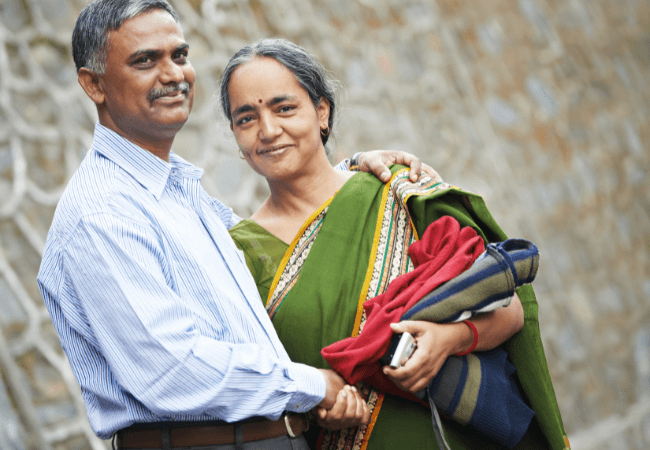
Hip replacement surgery is a pretty common procedure where they swap out a worn-out hip joint with a fake one called an implant.
They can consider adults of any age for a hip replacement, but it's usually people between 60 and 80 years old who get it done. The main reason for this surgery is osteoarthritis, which is basically wear and tear on the joint.
These artificial hip joints they put in are built to last at least 15 years. After the surgery, most people feel a lot less pain and can move around better.
Hip replacement surgery is a significant procedure that's considered after other options like physiotherapy, pain relief medications, and lifestyle changes haven't helped much.
Our experts might recommend hip replacement surgery if:
- You're experiencing severe pain, swelling, and stiffness in your hip joint, which is making it tough for you to move around.
- The pain in your hip is interfering with your daily activities and sleep.
- You're feeling down because the pain and restricted mobility are affecting your overall well-being.
Total hip replacement is the most common type of hip surgery. It involves replacing the entire hip joint, including the ball and socket parts, with artificial ones.
These artificial parts can be made of different materials like plastic, metal, or ceramic. Your surgeon will talk to you about the different types. They can either use cement to hold the artificial parts in place or rely on your bones to grow around them. In the UK, most people choose cemented hip replacement because it works well and helps you get moving sooner.
In a partial hip replacement, they replace just the femoral head, which is the ball part of your hip joint, with a metal or ceramic implant. They put this implant into your thigh bone. Usually, they do this kind of hip replacement when there's a fracture in the femoral head and they need to fix it.
This procedure is a bit like a partial hip replacement, but they don't remove as much of the femoral head. Instead, they shave down the arthritic surface of the femoral head a little bit and reshape it. Then, they put a metal cap on top and cement it in place. They leave the acetabulum, which is the socket part of the hip joint, as it is.
Hip resurfacing isn't right for everyone, though. Your surgeon will talk to you about whether it's a good choice for your situation.
This procedure is done under anesthesia and our experts may recommend one dose of antibiotics to reduce the risk of infection.
During the procedure, our experts will make an incision about 6 to 10 inches long, cut away the damaged joint surfaces, and then attach the pieces of the artificial joint. Before closing the incision, your surgeon will test by bending and rotating your knee to ensure proper function. The surgery lasts for about two hours.
After surgery, you may feel some discomfort or pain as the anesthetic wears off. You'll be offered pain relief if you need it. You may have a pad or pillow between your legs to hold them apart and keep your hip joint in one position. This will help to stop your hip from dislocating (moving out of position).
Getting up and starting to walk early on is an important part of your recovery. A physiotherapist will get you up and out of bed and give you some exercises to do. You’ll be given a walking frame or crutches to help you walk.
Everyone recovers differently, but it's often possible to return to light activities or office-based work within around 6 weeks.
The shoulder is comprised of three bones: 1) the humerus (arm), 2) the scapula (shoulder blade) and, 3) the clavicle (collarbone).
These bones form two joints: the shoulder joint (Glenohumeral) and the AC (Acromialclavicular) joint.
Surrounding the shoulder is a group of muscles and ligaments. Ligaments connect the bones of the shoulders. Tendons connect the bones to surrounding muscle.
Patients with shoulder pain and injury can experience symptoms that include:
> Shoulder Joint dislocation
> Pain, ranging from mild to severe
> Restricted movement
> Swelling, tenderness, bruising, or numbness
> Stiffness in the shoulder and upper arm
Our experts diagnose shoulder pain and injuries by learning about each patient’s history and reported activities and conducting a physical examination. In many cases, the doctor also orders imaging tests.
Common tests include:
Arthrograms (X-rays of the joints)
X-rays
Computed tomography (CT)
Magnetic resonance imaging (MRI)
Our expert's first course of action is non-surgical options like physiotherapy, medication, injections, etc. Surgical Options include :
Arthroscopic surgery: Many injuries such as rotator cuff tears and ACL joint injuries can be treated through arthroscopic surgery. A small incision is made and a tiny camera is inserted into the surgical site to guide surgeons through the procedure. Small surgical instruments are then inserted through the incision to perform the surgery.
Open surgery: In more severe cases, or for some older patients, open surgery can provide the best results.
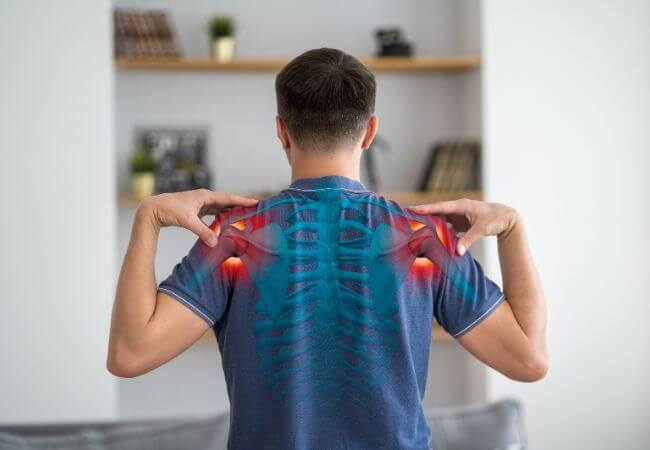
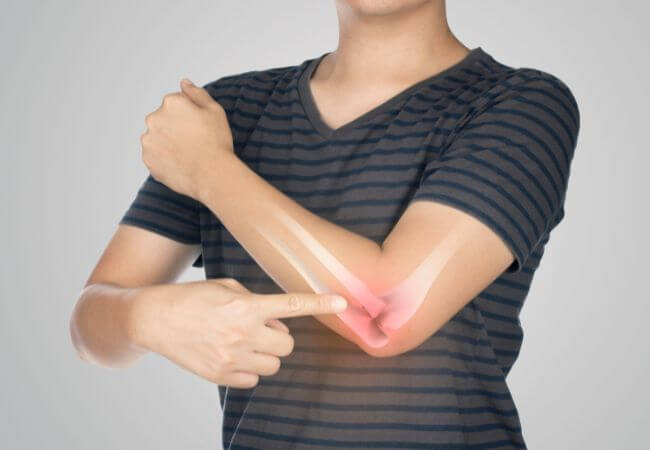
In carpal tunnel syndrome, the median nerve in your hand becomes compressed due to narrowing of the passage in the wrist called the carpal tunnel. This compression can lead to numbness, weakness, or pain radiating up the arm. The narrowing may result from hand injuries or rheumatoid arthritis.
Carpal tunnel surgery involves making an incision on the palm side of your wrist and cutting the ligament to alleviate pressure on the median nerve. This procedure is known as surgical decompression.
Cubital Tunnel Syndrome occurs when the ulnar nerve, which runs from the neck to the hand, becomes compressed. Symptoms include numbness, tingling, and weakness in the hand, primarily affecting the little finger, ring finger, and inside of the hand.
If symptoms persist despite medication and conservative treatments, decompression surgery may be necessary. This procedure alleviates pressure on the ulnar nerve, resulting in symptom reduction.
This condition arises from overuse of the forearm or trauma, leading to inflammation of the tendons in the forearm. When the inner elbow is affected, it's known as Golfer’s elbow, and when the outer elbow is involved, it's termed the Tennis elbow. Conservative treatments can often resolve the issue, but if pain persists, surgery may be necessary.
During surgery, the damaged tendon is removed either through arthroscopy or open surgery.
These are benign lumps filled with a jelly-like fluid that can develop in your wrist or hand. Sometimes, they resolve on their own. However, if a ganglion cyst compresses a nerve, it can cause pain, necessitating surgical removal.
During the procedure, our experts will identify the cyst and make an incision to remove it. Both the capsule and the stalk of the cyst are excised.
This condition involves a cord of tissue beneath the skin of your palm, causing your fingers to curl and fold. It can be painful and restrict your ability to grasp objects and perform tasks involving fingers away from the thumb.
Surgical treatment for this condition, known as fasciectomy, involves dividing the developed cord under the skin of your palm into two. This helps reduce contraction and leads to significant improvement in palm functionality.
Arthritis is a condition that affects the tissues of your joints, particularly the cartilage—a protective coating at the ends of bones. When cartilage breaks down, bones can rub against each other, leading to pain, swelling, stiffness, and deformity. Due to the numerous joints in our wrists and hands, arthritis can occur easily.
Managing pain from hand arthritis involves various approaches. For more information, consult our experts.
A fracture happens when a bone breaks or cracks due to a force stronger than the bone can handle. The most common areas for fractures include the wrist, ankle, and hip.
Dislocation happens when the end of a bone moves out of its usual spot in a joint. For instance, if your shoulder pops out of its socket, it's dislocated.
A sprain occurs when a ligament stretches too far or tears. Ligaments are the bands that connect bones and keep joints stable. These injuries can range from mild to severe and are often seen in the ankle, knee, and wrist.
A strain happens when you stretch or tear a muscle by overextending it. Examples include hamstring strains, back strains, and abdominal strains.
Cartilage acts like a flexible shock absorber, covering and safeguarding the ends of certain bones. Injuries to cartilage can happen in joints like the knee and shoulder.
Tendinitis happens when the tissues connecting muscles to bones (tendons) become swollen and inflamed. It's often caused by repetitive movements over time. An example is jumper’s knee, also known as patellar tendinitis.
This injury is typically caused by a blow to the head, resulting in symptoms like disorientation and dizziness, among others.
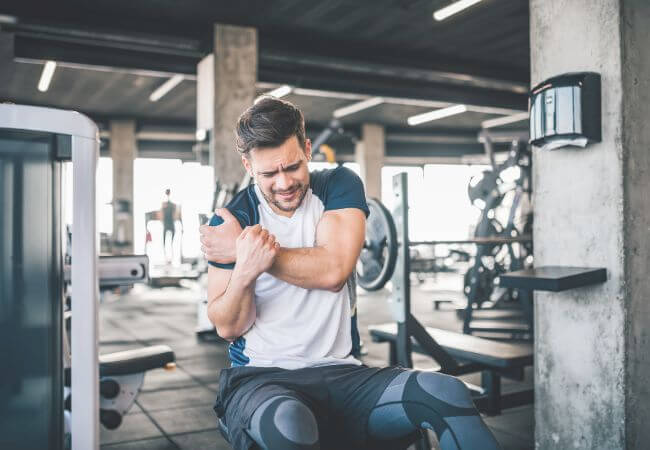
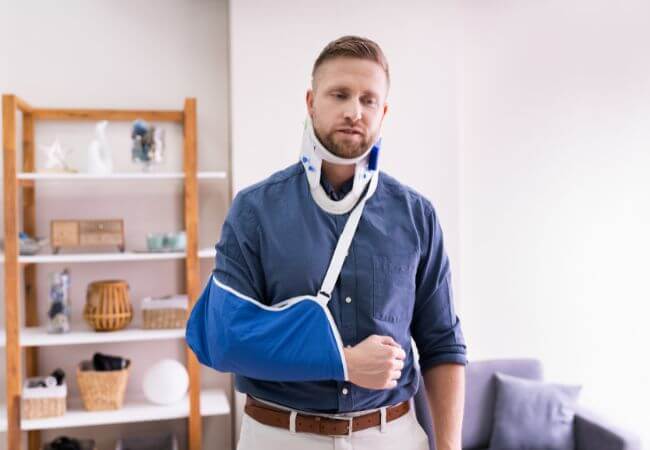
Traumatic injuries can include bone fractures or significant damage to soft tissues. Common symptoms may include:
- Intense swelling and pain
- Bruising
- Sensation of cracking or popping
- Extremity deformity
In serious accidents, multiple breaks, damage to blood vessels, and tearing or rupturing of other tissues can occur. In such cases, it's important to call an ambulance and seek immediate care at the nearest emergency trauma center.
Orthopedic trauma patients may receive either surgical or non-surgical treatment, depending on the severity of the injury. Less severe injuries can often be managed non-surgically by using a cast, sling, braces, or splint to provide external stability to the affected area.
Surgery may be necessary for more serious injuries. Minor surgical procedures may involve the placement of pins, wires, screws, or plates to stabilize the bone. In cases of severe injuries, complex reconstruction procedures may be required.
Rehabilitation begins promptly to maintain mobility and prevent strength loss while promoting range of motion.
Recovery time for a fracture depends on the type and severity of the injury. Severe cases may take several months to fully heal.
In some instances, fractures may not heal completely (non-unions), or the bone joints may not align correctly after healing (mal-union). Infections can also impede the healing process. If these issues arise, consulting a doctor is necessary for corrective measures.
Bone tumors originate within the bones, including the spine, leg bones, ribs, or arm bones. Benign bone tumors are more prevalent than malignant ones. Examples of common benign tumors include nonossifying fibromas, osteochondromas, and unicameral bone cysts. Among malignant tumors, Ewing sarcoma and osteosarcoma are frequently encountered. Bone tumors are typically diagnosed more often in children and young adults.
Soft tissue sarcoma originates in connective tissue, which encompasses blood vessels, fat cells, lymph nodes, muscles, nerves, and tendons. It can develop anywhere in the body, although it most commonly occurs in the arms, legs, and abdomen. Soft tissue sarcoma comprises numerous subtypes and can affect individuals of all ages, including children and adults.
Spinal arthritis, also known as degenerative joint disease, occurs when the cartilage between the facet joints in the spine breaks down. This can result in low back pain and/or leg pain.
A herniated disc happens when the inner gel within the disc leaks out and applies pressure on a spinal nerve, often causing pain in the leg or arm.
Degenerative disc disease occurs when the spinal disks wear down. These disks are rubbery cushions located between your vertebrae, the bones in your spinal column. They serve as shock absorbers and enable comfortable movement, bending, and twisting. As a normal part of aging, everyone's spinal disks degenerate over time. However, when these cushions wear away, the bones may begin to rub against each other, leading to pain and other issues.
Most spinal fractures are attributed to osteoporosis, a condition characterized by a loss of bone structural integrity.
As we age, our bones become thinner and weaker, reducing their strength. Osteoporosis is a disease that causes bones to become extremely fragile and prone to fractures. It often progresses silently over many years, without any noticeable symptoms or discomfort until a bone breaks.
Spinal stenosis is a condition where certain parts of the spine narrow, potentially compressing a spinal nerve or the spinal cord in the neck.
Cervical spondylosis refers to age-related wear and tear affecting the spinal disks in your neck. It's a common condition that tends to worsen with age. In many instances, it can be managed using non-surgical methods.
Spondylolisthesis is a spinal condition that often results in lower back pain. It happens when one of the vertebrae, the bones of the spine, slips out of place onto the vertebra below it. In many cases, nonsurgical treatment methods can alleviate symptoms. However, surgery may be considered for severe cases.
Scoliosis, commonly known as curvature of the spine, occurs when the spine, which is typically straight, curves sideways into an S or C shape. This condition often develops during periods of rapid growth in late childhood and early adolescence.
Sciatica refers to pain caused by irritation of the sciatic nerve. Anything that irritates this nerve can result in pain, which can range from mild to severe. Sciatica typically occurs due to compression of a nerve in the lower spine.
The sciatic nerve is the longest and widest nerve in the human body. It originates in the lower back, travels through the buttocks, and extends down the legs, terminating just below the knee.
Spondylolisthesis is a spinal condition that often results in lower back pain. It happens when one of the vertebrae, the bones of the spine, slips out of place onto the vertebra below it. In many cases, nonsurgical treatment methods can alleviate symptoms. However, surgery may be considered for severe cases.

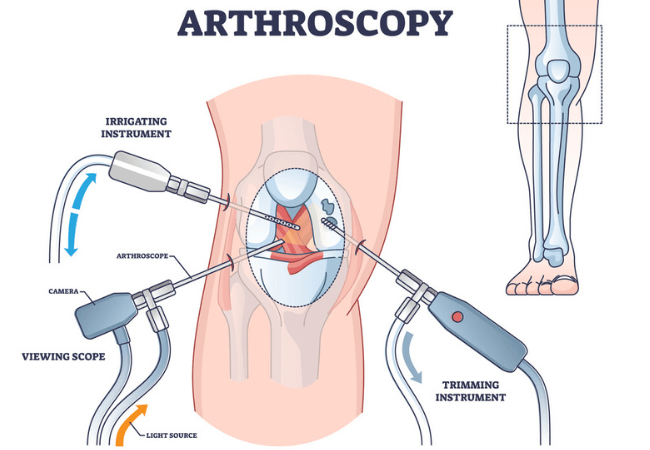
The rotator cuff comprises four muscles and tendons encircling the ball-and-socket shoulder joint. When these tendons tear, it's known as a rotator cuff tear. Playing a crucial role in numerous daily activities, an injured rotator cuff can lead to significant pain.
Shoulder instability arises when the ligaments and tendons connecting your arm to your shoulder become overstretched, often due to high-energy trauma or repetitive arm motions in sports injuries. Dislocation of the shoulder joint anteriorly can result in damage to the glenoid labrum.
A ligament is a band of tissue that connects and stabilizes bones. Around the knee joint, there are four main ligaments:
(a) Anterior cruciate ligament (ACL)
(b) Medial collateral ligament (MCL)
(c) Lateral collateral ligament (LCL)
(d) Posterior cruciate ligament (PCL)
When any of these ligaments tear, the knee joint can become unstable and may buckle. This often leads to pain and swelling in the joint area.
The two cartilages situated between your femur (thighbone) and tibia (shinbone) are called the menisci. They serve as shock absorbers and help transmit weight from one bone to another, thereby maintaining knee stability. The meniscus cartilage can tear due to aging or as a result of contact sports.
Your kneecap can get dislocated due to various reasons which might be painful and prevent you from walking.
Really thankfull to Dr pradeepa and Dr waseem , took care very well..... The wards are well maintained and staffs tc very well
My mama iqbal pasha got admitted under Dr wasim and Dr Amina both doctors are well explained about diagnosis .we are very happy from q medical Hospital.all staff very kind and I will recommend to everyone
My husband iqbal pasha got admitted in q hospital all staff are good dr wasim sir is excellent surgeon well explained about the problem I will recommend to everyone.
I Heartfully appreciate to Dr Wasim that I Sibi John had undergone the surgery MGB (Bariatric ). Dr Wasim is a great Dr Amazing treatment from the all the Dr, wonderfull hard working nursing staff Good coordination from the front office people.Hospital care is excellent am very thankful to All the Doctors ,nursing staff , Front office and house keeping . I recommend to everyone to this hospital.
My sister in law was admitted for 24 hours, the doctors and staff of the hospital
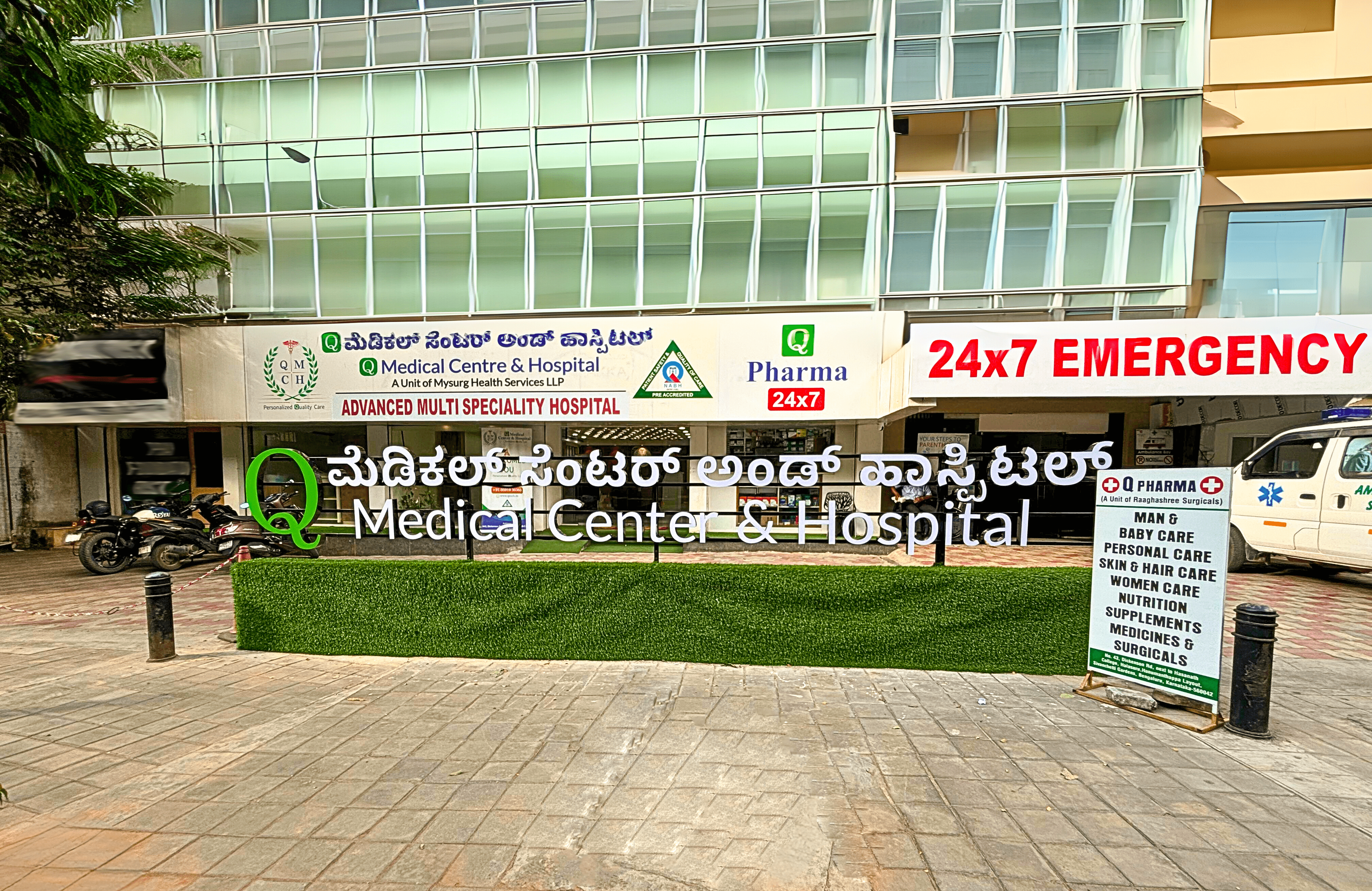
©2025 Q Medical Center and Hospital. All Rights Reserved.
Website Designed & Maintained By
HappiMed
Typically replies within an hour
Currently we are offline to receive your call. However you can WhatsApp us and we will get back to you soon.
Hello! 👋
How can I help you?